Despite being the smallest glute muscle, the gluteus minimus drammatically impacts how your lower body looks and performs.
Specifically, it stabilizes the hips, allowing you to move with maximum efficiency, and it adds width to your butt, giving it a full, proportional appearance.
Unbeknownst to most, common glute exercises like squats and hip thrusts don’t effectively train the gluteus minimus.
And that’s why many weightlifters have a lower body that’s less strong, stable, or well-balanced than it could be.
To correct this imbalance, you need to include targeted gluteus minimus exercises in your workouts. The best ones are:
- Bulgarian split squat
- Reverse lunge
- Single-leg Romanian deadlift
- Curtsy lunge
- Single-leg hip thrust
- Cable hip abduction
- Lateral band walk
In this article, you’ll learn why these exercises are effective, how to perform them correctly, how to include them in your program, and more.
Glute Anatomy
The gluteal muscles, or “glutes,” consist of three main muscles: the gluteus maximus, the gluteus medius, and the gluteus minimus.
The gluteus maximus is the largest of the three. It extends the hip, which means it helps move your thigh backward. Because of its size, it gives the butt most of its shape.
The gluteus medius is on the side of the hip. Its main function is hip abduction (moving the thighs away from each other), though it also plays a crucial role in stabilizing the pelvis.
The glute minimus sits beneath the glute medius and has the same primary functions.
Here’s how the glutes look on your body:
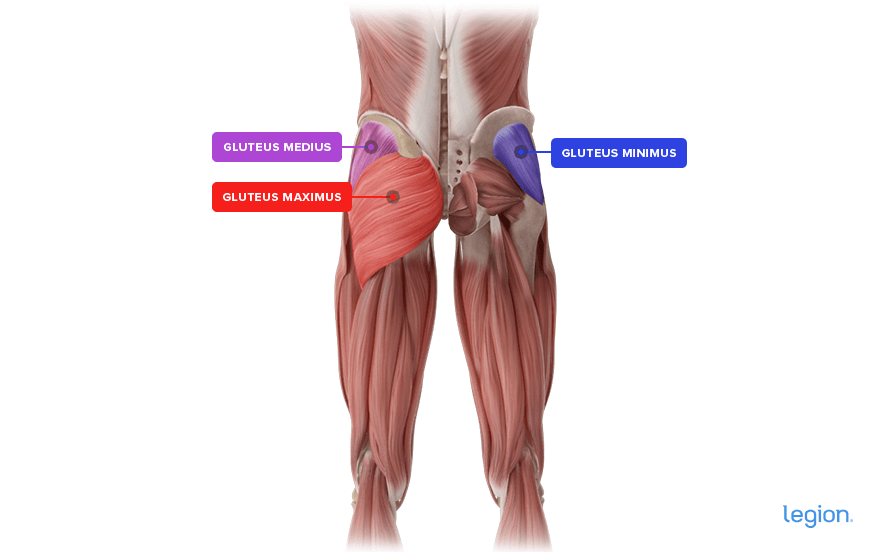
The 7 Best Gluteus Minimus Exercises for Strength and Size
Many weightlifters think the squat and hip thrust are the only exercises you need to grow big, strong glutes.
However, research shows that while squatting and hip thrusting are fantastic for gaining size and strength in the gluteus maximus, they’re lousy at training the gluteus minimus.
Despite the lack of specific studies on the best gluteus minimus exercises for growth, research shows which exercises activate these muscles the most, which helps us understand the best ways to train them.
According to this data, unilateral exercises (exercises that train each side of your body independently) are most effective, likely because they require more hip stability than bilateral exercises (exercises that train both sides of your body simultaneously). Exercises that involve hip abduction also yield good results.
With this in mind, here are the best exercises for gluteus minimus size and strength:
1. Bulgarian Split Squat
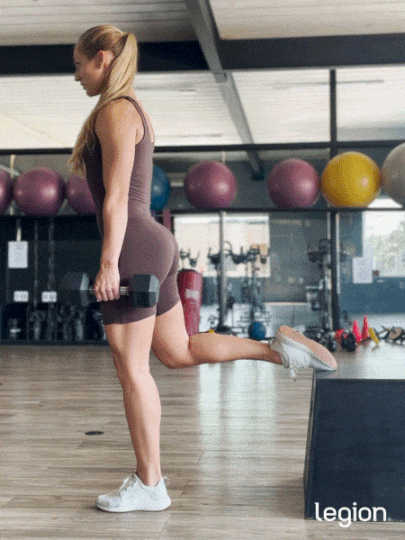
The Bulgarian split squat is one of the best “side glute exercises” because it’s an inherently unstable unilateral exercise that greatly involves the glutes.
How to:
- While holding a dumbbell in each hand, stand about 2-to-3 feet in front of a bench.
- With your right foot (and heel in particular) firmly planted, place the top of your left foot on the bench behind you.
- Look at a spot on the floor six-to-ten feet in front of you and lower your butt toward the floor by bending at your right knee.
- Keep lowering yourself until your right knee bends to 90 degrees.
- Stand up and return to the starting position.
- Once you’ve completed the desired number of reps, switch sides and repeat the process.
2. Reverse Lunge
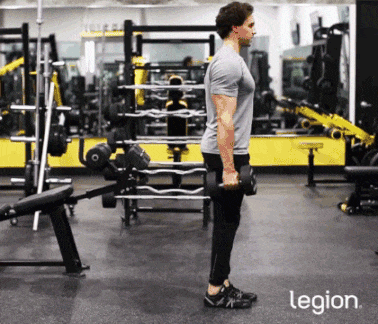
The reverse lunge is an ideal exercise for the gluteus minimus because it’s dynamic, trains the glutes to a high degree, and requires balance, stability, and coordination.
How to:
- Holding a dumbbell in each hand, stand up straight with both feet about hip-width apart.
- Step back about two-to-three feet with your left leg, placing most of your weight on your right foot.
- Lower your body by bending both knees until your left knee touches the floor.
- Push off the floor with your right foot and lean slightly backward, allowing your legs to straighten.
- Once you’re standing, bring your left foot forward so that it’s next to your right foot, then repeat on your left side.
3. Single-Leg Romanian Deadlift
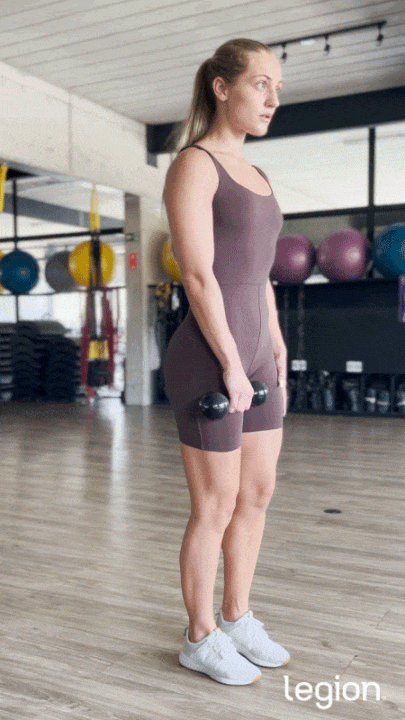
The single-leg Romanian deadlift requires balance and stability and trains the glutes in a stretched position, which benefits growth.
How to:
- Stand up straight and hold a dumbbell in your right hand in front of your right thigh.
- Flatten your back and lower the weight toward the floor in a straight line while keeping your right leg mostly straight, allowing your butt to move backward and your left leg to straighten behind you as you descend.
- Once you feel a stretch in your right hamstring, bend your right knee slightly more and continue lowering the weight until your lower back begins to round.
- Reverse the movement and return to the starting position.
- Once you’ve completed the desired number of reps, switch sides and repeat the process.
4. Curtsy Lunge
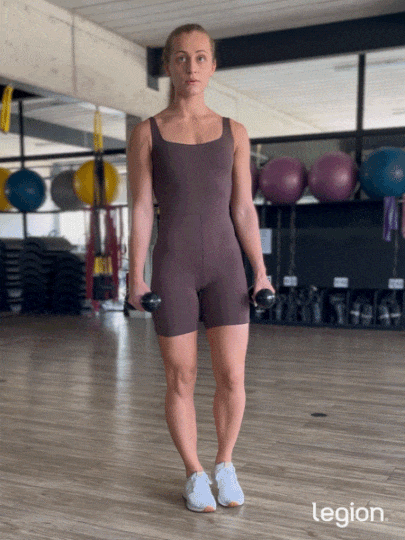
Because your stepping leg moves across the midline of the body, the curtsy lunge involves a rotational element that trains the glute minimus in a unique way. This is beneficial because training your muscles through different ranges of motion and at various angles produces more balanced and complete growth than training with less variation.
How to:
- Holding a dumbbell in each hand, stand with your feet about hip-width apart.
- Step diagonally backward with your left leg so that it crosses your right leg.
- With most of the weight on the right leg, lower your body by bending both knees at the same time until the left knee touches the floor.
- Reverse the movement and return to standing position.
- Once you’ve completed the desired number of reps, switch sides and repeat the process.
5. Single-Leg Hip Thrust

The single-leg hip thrust is a top-tier gluteus minimus isolation exercise for people who are new to training or working around an injury, or for those who want to do gluteus minimus muscle workouts at home.
How to:
- Sit on the ground with your shoulders resting against a bench perpendicular to your body.
- Place a dumbbell in your hip crease.
- Plant your feet on the floor about shoulder-width apart and 12-to-18 inches from your butt so your knees are bent to about 90 degrees.
- Straighten your left knee to lift your left leg off the floor.
- Push the dumbbell upward by pressing through your right heel until your upper body and right thigh are parallel to the ground and your right shin is vertical.
- Reverse the movement and return to the starting position.
- Once you’ve completed the desired number of reps, switch sides and repeat the process.
6. Cable Hip Abduction
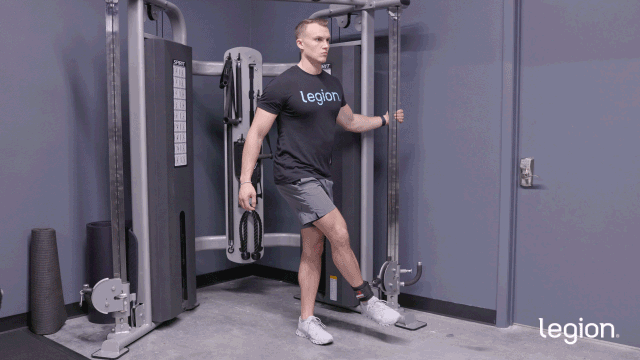
Cable hip abductions are another outstanding isolation exercise for the gluteus minimus muscle. Their main benefits are that they train hip abduction and that by using a cable, there’s constant tension on your glutes throughout each rep, which taxes your butt slightly differently from the other exercises on this list.
How to:
- Set the pulley on a cable machine to the lowest setting and attach a cuff attachment.
- Secure the cuff around your right ankle, then stand about a foot from the cable machine facing perpendicular to the cable with your left foot closest to the pulley.
- Grab the metal column that holds the pulleys with your left hand.
- While maintaining a slight bend in your right knee, raise your right foot out to your right side.
- Return the movement and return to the starting position.
- Once you’ve completed the desired number of reps, switch sides and repeat the process.
7. Lateral Band Walk
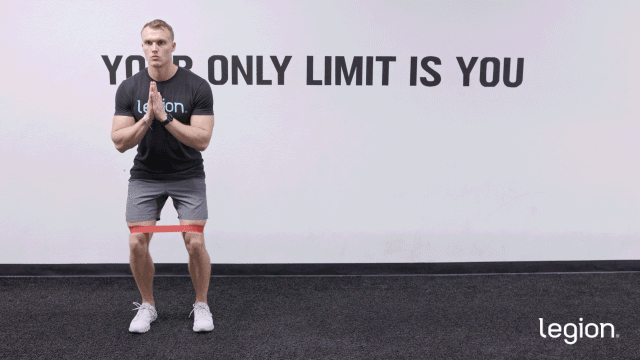
Lateral band walks can be a useful “activation exercise” for the glute minimus that helps you warm up and establish a strong mind-muscle connection. Alternatively, incorporating high-rep sets of lateral band walks at the end of your workout can be a fun way to get a glute “pump,” which may aid growth in some scenarios.
- Wrap a short resistance band or booty band around both legs just above your knees.
- Position your feet about shoulder-width apart to create tension in the band, then bend your knees slightly and press your hands together in front of your chest.
- Take a step to the left with your left foot, then a step to the left with your right foot, finishing with your legs about shoulder-width apart again.
- Continue taking small, controlled steps to the left for a set number of steps or a specified distance.
- Reverse the direction and do the same number of steps or distance to your right.
How to Incorporate Gluteus Minimus Exercises into Your Routine
Despite what some “gurus” claim, doing workouts that focus solely on training the gluteus minimus isn’t a good idea.
While your glute workouts should include gluteus minimus exercises, they shouldn’t consist of only these exercises.
Why?
Because this approach neglects the other glute muscles that are essential for overall strength, stability, and size.
Don’t just take my word for it. Bret Contreras, one of the world’s leading experts on glute training, explained this well on a recent episode of my podcast, Muscle for Life:
I have this rule of thirds, meaning a third of your volume for glutes should be vertical hip extension exercises. Those maximize this tension in the stretch and those involve squats, lunges, split squats, step-ups, deadlift variations, and good mornings. Another third should be horizontal. That includes your hip thrust, glute bridge, kickback, back extension, and reverse hypers. And then the remaining third should be abduction.
In other words, even if you want to emphasize the glute minimus, your workouts should still include exercise for all the glute muscles.
With that in mind, here’s a balanced glute workout that emphasizes exercises for the gluteus minimus:
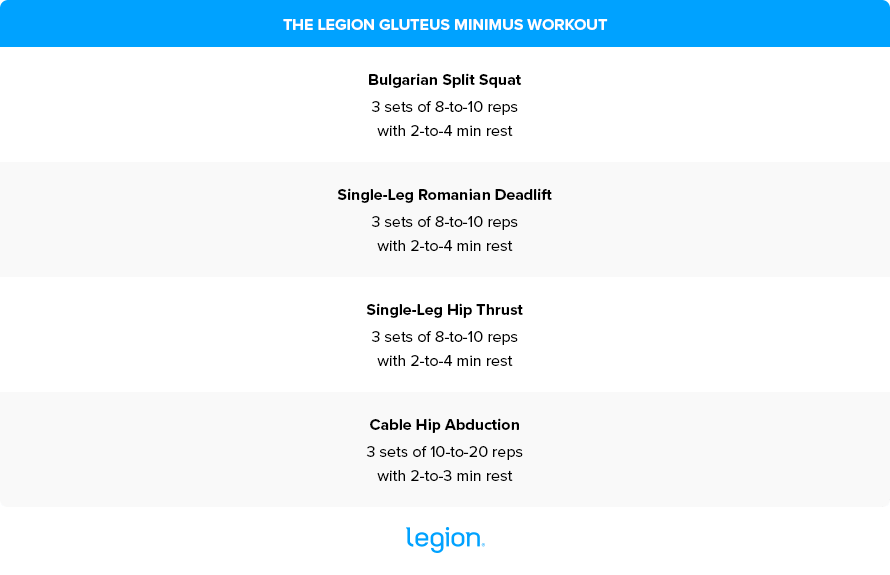
The Benefits of Gluteus Minimus Exercises
The main benefits of training your gluteus minimus are:
- Enhanced Lower Body Aesthetics: Developing the gluteus minimus helps to add width to your butt, creating a more rounded, full appearance.
- Improved Athletic Performance: A strong gluteus minimus improves hip stability and movement efficiency, which likely boosts running and sprinting performance.
- May Reduce Injury Risk: Some experts believe strengthening the hip abductors, including the gluteus minimus, can prevent weaknesses that lead to knee valgus, iliotibial band syndrome, ACL injuries, and patellofemoral pain syndrome. They also think it can reduce the risk of lower extremity injuries caused by poor force absorption and instability.
Scientific References +
- Gottschalk, F, et al. “The Functional Anatomy of Tensor Fasciae Latae and Gluteus Medius and Minimus.” Journal of Anatomy, vol. 166, 1 Oct. 1989, pp. 179–189, www.ncbi.nlm.nih.gov/pmc/articles/PMC1256751/.
- Plotkin, Daniel , et al. Hip Thrust and Back Squat Training Elicit Similar Gluteus Muscle Hypertrophy and Transfer Similarly to the Deadlift. https://doi.org/10.1101/2023.06.21.545949.
- Reaz, M. B. I., et al. “Techniques of EMG Signal Analysis: Detection, Processing, Classification and Applications.” Biological Procedures Online, vol. 8, no. 1, Dec. 2006, pp. 11–35, https://doi.org/10.1251/bpo115.
- Moore, Damien, et al. “A SYSTEMATIC REVIEW and META-ANALYSIS of COMMON THERAPEUTIC EXERCISES THAT GENERATE HIGHEST MUSCLE ACTIVITY in the GLUTEUS MEDIUS and GLUTEUS MINIMUS SEGMENTS.” International Journal of Sports Physical Therapy, vol. 15, no. 6, Dec. 2020, pp. 856–881, https://doi.org/10.26603/ijspt20200856.
- Collings, Tyler J., et al. “Gluteal Muscle Forces during Hip-Focused Injury Prevention and Rehabilitation Exercises.” Medicine & Science in Sports & Exercise, vol. 55, no. 4, 1 Apr. 2023, p. 650, journals.lww.com/acsm-msse/Abstract/2023/04000/Gluteal_Muscle_Forces_during_Hip_Focused_Injury.6.aspx, https://doi.org/10.1249/MSS.0000000000003091. Accessed 3 Apr. 2023.
- Ganderton, Charlotte, et al. “Gluteus Minimus and Gluteus Medius Muscle Activity during Common Rehabilitation Exercises in Healthy Postmenopausal Women.” Journal of Orthopaedic & Sports Physical Therapy, vol. 47, no. 12, Dec. 2017, pp. 914–922, https://doi.org/10.2519/jospt.2017.7229. Accessed 7 May 2019.
- Jones, Margaret T, et al. “Effects of Unilateral and Bilateral Lower-Body Heavy Resistance Exercise on Muscle Activity and Testosterone Responses.” Journal of Strength and Conditioning Research, vol. 26, no. 4, Apr. 2012, pp. 1094–1100, https://doi.org/10.1519/jsc.0b013e318248ab3b.
- Park, Sanghoon, et al. “Comparative Analysis of Lunge Techniques: Forward, Reverse, Walking Lunge.” ISBS - Conference Proceedings Archive, 6 Nov. 2016, ojs.ub.uni-konstanz.de/cpa/article/view/6941.
- Park, Samho , et al. Comparative Study of the Biomechanical Factors in Range of Motion, Muscle Activity, and Vertical Ground Reaction Force between a Forward Lunge and Backward Lunge. June 2021, pp. 10(2):98-105, https://doi.org/10.14474/ptrs.2021.10.2.98.
- Sato, Shigeru, et al. “Elbow Joint Angles in Elbow Flexor Unilateral Resistance Exercise Training Determine Its Effects on Muscle Strength and Thickness of Trained and Non-Trained Arms.” Frontiers in Physiology, vol. 12, 16 Sept. 2021, https://doi.org/10.3389/fphys.2021.734509.
- Costa, Bruna Daniella de Vasconcelos, et al. “Does Performing Different Resistance Exercises for the Same Muscle Group Induce Non-Homogeneous Hypertrophy?” International Journal of Sports Medicine, vol. 42, no. 09, 13 Jan. 2021, pp. 803–811, https://doi.org/10.1055/a-1308-3674.
- Fetters, K. Aleisha. “Exploring the Role of the Lateral Gluteal Muscles in Running.” Strength and Conditioning Journal, July 2019, p. 1, https://doi.org/10.1519/ssc.0000000000000486. Accessed 2 Dec. 2019.










